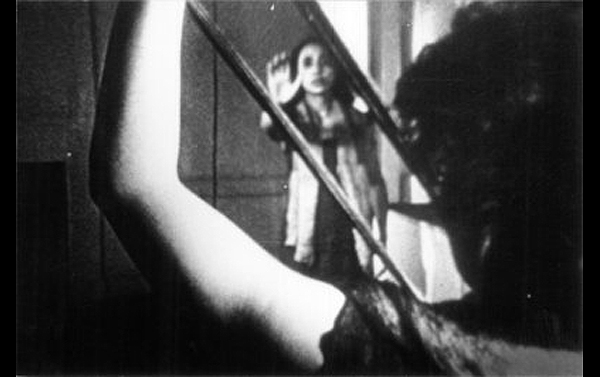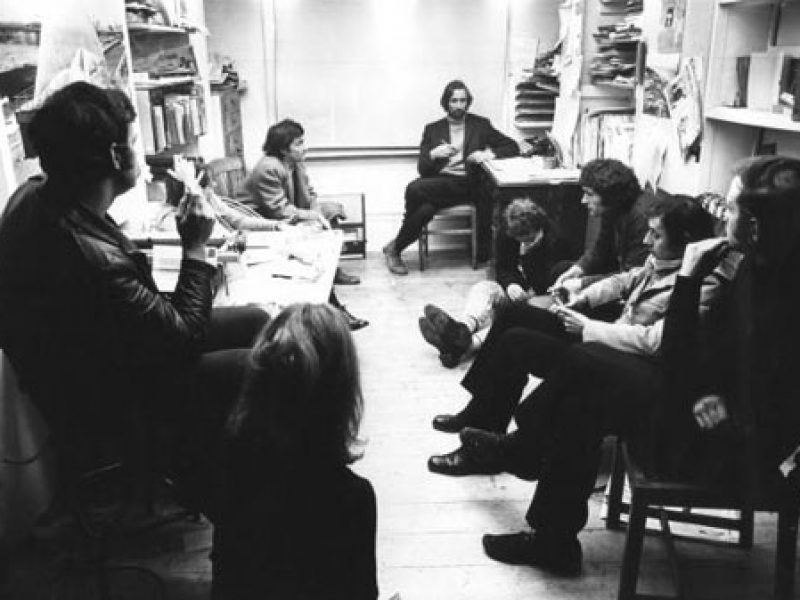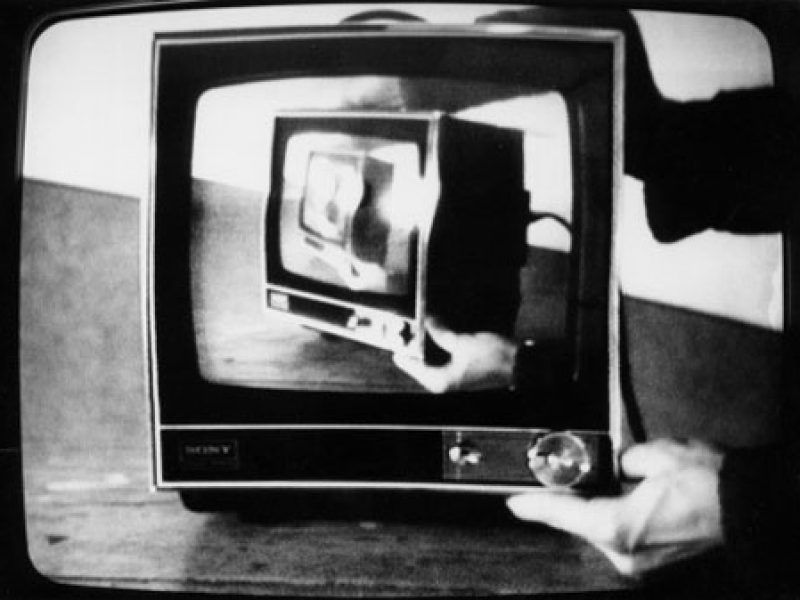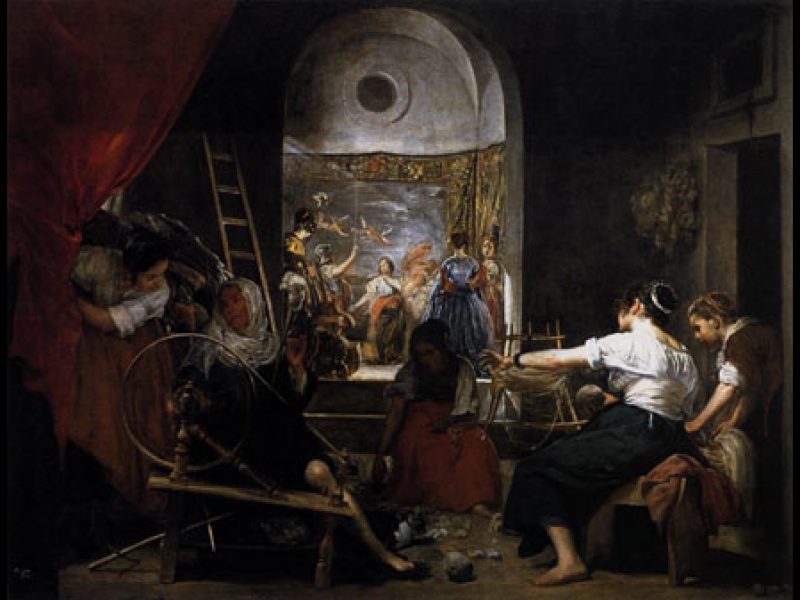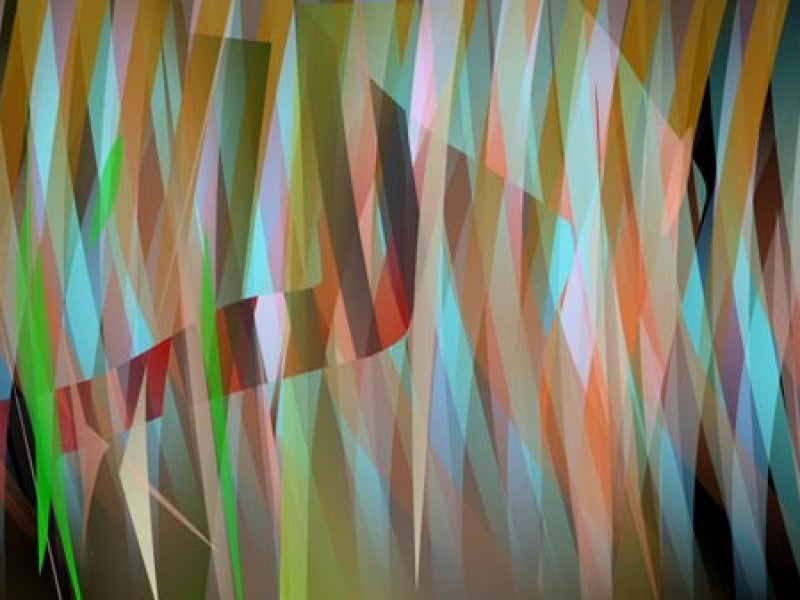The rural poor in Constable’s paintings, assumed by rich spectators to be leisurely whiling away the time, were, by being reduced to semiotic tropes and formalist components (the splash of red of a neckerchief here, a white chemise there) a locum of projection for the moral and wealthy spectator. In these paintings we might speak of an overlap, therefore, of the traditional class roles of producer and consumer; of rich and poor; and of abstract/formal component with that of the representational. But this overlap occurred in the fantasy space of individual interpretation. Today what we increasingly see, as I argued in my last post, is a collapse of the spectator and its object in real space, a collapse which carries the false implication of entitlement for the member of the public. While this overlap may be functionally ‘real’, it conveniently masks a more urgent reality of material difference.
Also encapsulated in this modern spectator is the sad tale of two competing, though tied, theoretical narratives. The democratically enfranchised, aesthetically enriched and socially included modern gallery goer is an achievement of identity politics and its compatibility with, within certain realms, neo-liberal economies. The reality that this same person is, or could be, an exploited token of the neo-liberal agenda is partly the failure of a more materially based view of things, notably Marxism.
But here too, in ‘theory’, there has been a collapse. Those who sought to pursue issues of embodiment and identity, as well those supposedly ‘critical’ techno-determinists whose identity might be said to be found in the ‘no-place’ of the internet, now seek to ‘occupy’ some thing. At the same time, what has emerged as the driving principal of the new order, our new social reality, is not difference, but exchange. The relativism that has been post-modern theory’s major contribution to how we think about and see the world has been strategically employed to instigate a series of exchanges wherein, at each point, value has been accrued by the same old elite and taken from those which a politics of difference supposedly represented. It’s just as athletes all say: you win by accumulating marginal gains.
Exchange is more material than capital itself. Banks ‘too big to fail’ must be allowed to continue, in and through both debt and the economic ruin of nations, to maintain the order of things by continuing to exchange. What we see in this phenomenon is a closing of the loop, a coming full circle which I want to suggest may signal a seismic historical shift. A description of what was once capitalism’s modus operandi – a system of exchange in which capital can be extracted from a citizenry forced into complicity on the behalf of those with the power and inclination to do the forcing – can illustrate this. It seems now that the element of participation has become so naturalised that the definition now needs no implicit description of these relations based on violence. This idea of complicity is old now, it is variously described in relation to culture as hegemony, interpellation and so on. But its result, an era in which the exchange of commodities per sehas become transparently culture’s form of self-expression is more novel. Just as in banking, where net exchange is inextricably connect to the production of capital, now the mere function of exchange, with little consideration of the value of the commodity or the parties involved, is inching closer to becoming the function of art. What I want to discuss is how art practices might be interpreted as reflecting these last days and how also, with escape from this all-consuming vortex an imperative, transcendence is becoming an increasingly important focus of artistic energy.
At the Whitstable Biennale, in an exhibition of films selected by Jeremy Millar Speak Nearby, the themes are ‘ritual’, ‘performance’, ‘possession’ and ‘magic’. In almost the first scenes of Maya Deren’s 1946 Ritual in Transfigured Time we see a woman (later assisted by another, then watched over by a third) act out the work of weaving. Time unravels and is then wound back in what is surely an analogy of the medium. But perhaps this is also a narrative thread and part of the social tapestry that we see at the smart gathering in a later scene. Our subject isn’t held by in place though; she slips out from the hand of a dance partner. Finally she reappears in a negative image, as if her death, which is implied, is akin to leaving the medium and is shown by her form moving one layer of mediation closer to returning to the light from which first entered the camera with her image.
In another of Miller’s four choices we are confronted by the medium itself rather than its shadow. We find a projector set up in one corner, it noisily, rhythmically generates its spectacle, one which is fittingly based on a dance. This is Joachim Koester’s 2007 film Tarantism. It shows performers convulsing and writhing in what Millar calls an ‘anti-dance’ in his notes. The work is based on the traditional Tarantella dance performed in Southern Italy and which was devised for the treatment of the bite of the wolf spider. Villages get together and help the victim, frenzied and in a trance-like state, dance, sweat out and shake off the poison. Spiders know that the complex networks of an animal’s veins are also webs that can be used to equally deadly affect.
While, in the beautifully shot and textural Deren film, life is woven into film stock and poetics and metaphor interweave with the medium itself, the performers of Koester’s 2007 film are suspended on the silver screen as if caught in a spider web, something that the oppressive presence of the projector emphasises: a predator watching over. The performers seem to want to shake off the medium itself, like it was poison. The performers’ movements compete with the recording speed of 24fps, hoping to evade capture. The film holds them taught like muscle involuntarily in spasm. This is the general condition of the medium today, not film perse, but mediatisation: post-video, post-internet. We see it in the Sebastian Buerkner work also: a man runs at the edge of the screen as if to escape. The work makes the point that our memories are never our own, they always get rechanneled into pathways that co-opt them. It is a condition which is reflected especially by the moving image.
Dr Thomas Morgan Evans is the LUX writer in residence for September 2012. He completed his PhD under the supervision of Professor Briony Fer at the University College London where he is now a Henry Moore Institute Post-Doctoral Research Fellow, working on a book project on Andy Warhol and contemporary sculpture. Besides this he has previously been writer in residence at the LUX/ICA Biennial of Moving Images 2012 and is pursuing a number of writing projects ranging from fiction to art history and theory and philosophy. He is a keen cyclist and lives in London.

